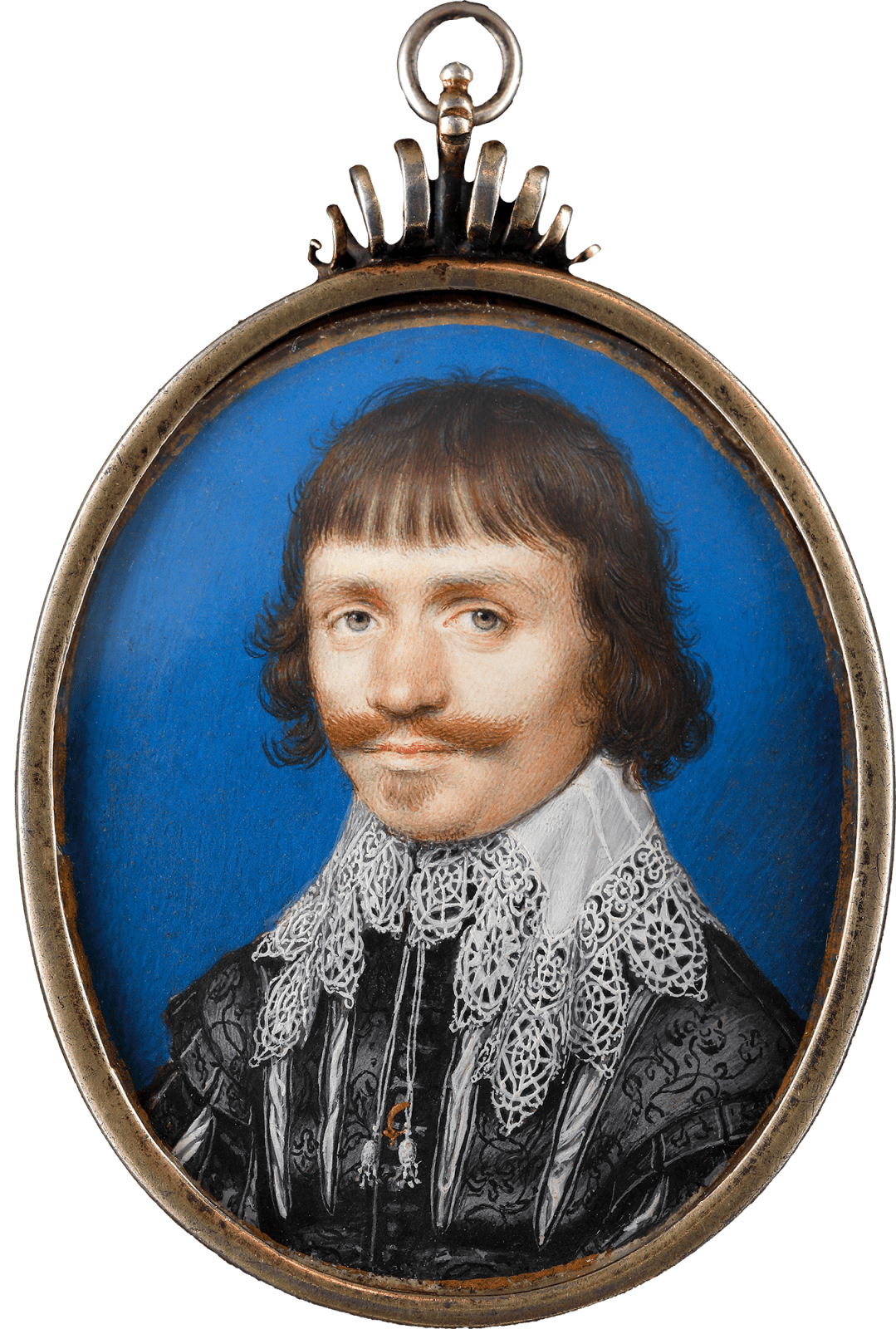
Alexander Cooper
To view all current artworks for sale visit philipmould.com
This sensitive portrait, painted by the younger brother of Samuel Cooper, Alexander, shows a young gentleman proudly displaying a gold ring tied to his collar tassels. The conspicuous display of such a jewel in an oil painting may indicate wealth, but in a portrait miniature it was more likely to indicate an exchange of portraits for the purpose of courtship. At this period, both men and women exchanged gold rings, but without the sitter’s hand present in the portrait oval, the artist has included the token tied to the collar so that it can be seen.
As identified in Bejewelled: Men and Jewellery in Tudor and Jacobean England, discussion of the portrait of Sir Henry Lee painted by Anthonis Mor in 1568 [National Portrait Gallery, NPG 2095], rings could also refer to ‘bonds of friendship’ between men. In this case it has been suggested that Lee’s friendship with Edward, 3rd Baron Windsor, is celebrated here, as there exists a portrait of Edward also with his thumb through a ring.[1]
The sitter here wears clothing very close to that worn by a gentleman tentatively identified as Ferdinand III, Holy Roman Emperor, which may have been painted by Cooper when on the Continent in the 1630s [Victoria and Albert Museum, P.6:1-1944]. While his older brother Samuel stayed close to home – assisting their uncle John Hoskins in his London studio – Alexander may have been apprenticed to the more cosmopolitan limner, Peter Oliver (c.1594-1647). Evidence in correspondence suggests that Alexander was working in the Netherlands in the early 1630s when the present portrait was painted, and it was in The Hague where he worked at the exiled court of Elizabeth of Bohemia. In the 1640s Alexander moved to Sweden, where he gained the title of ‘official painter’.[2]
The blue background of the present work is an archaic feature for the 1630s, but it may have been used at the exiled court as a visual link back to the English court. Portrait miniatures were an important link back to England for Elizabeth of Bohemia and her English courtiers. In the set of miniatures depicting Frederick V of the Palatinate with his wife and children, Cooper employs various backgrounds, including a ‘wet-in-wet’ red curtain and landscape background [Gemäldegalerie, Berlin, c. 1632-33, Kat.Nr.M.566]. It is probable that the sitter in this portrait was part of the contingent of English courtiers present in The Hague in the early 1630s.
[1] Discussed by N. Awais-Dean, Bejewelled: Men and Jewellery in Tudor and Jacobean England, British Museum, London, 2017, P. 36
[2] B. Grosvenor/ E. Rutherford, Warts and All; the Portrait Miniatures of Samuel Cooper, Exhibition Catalogue, Philip Mould Gallery, 13 November-7 December 2013, p.28-29
Provenance
Sotheby's, London, 11 March 1985, lot 187